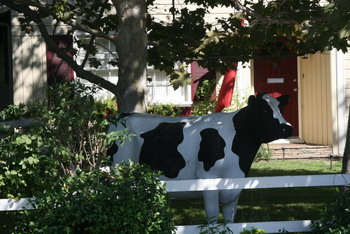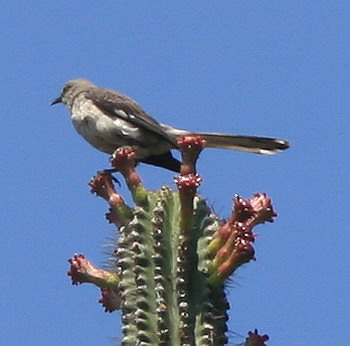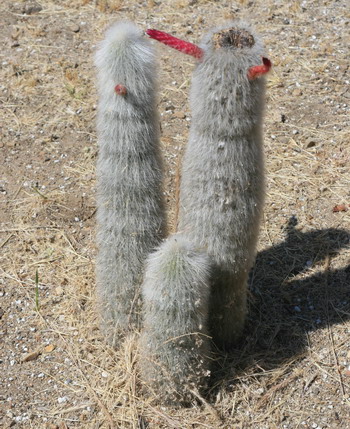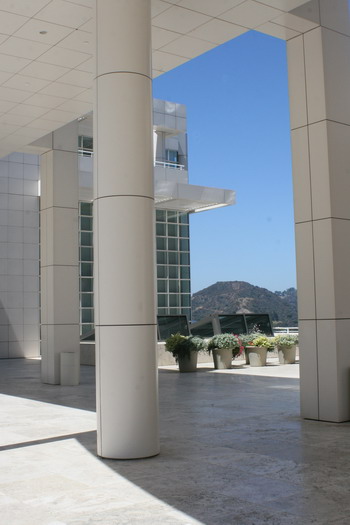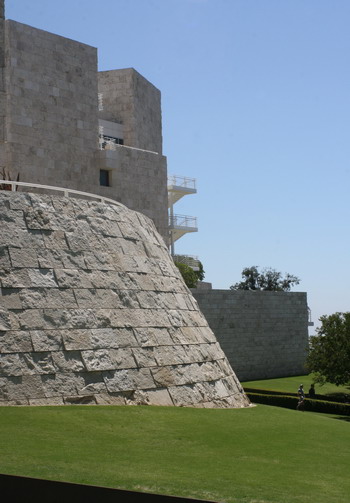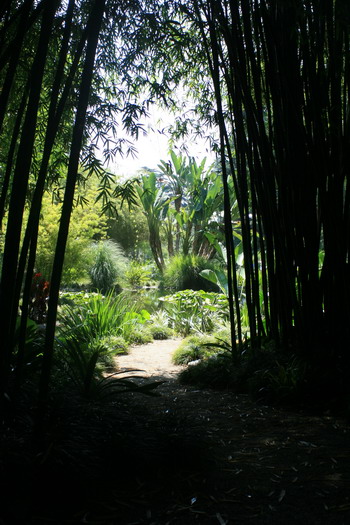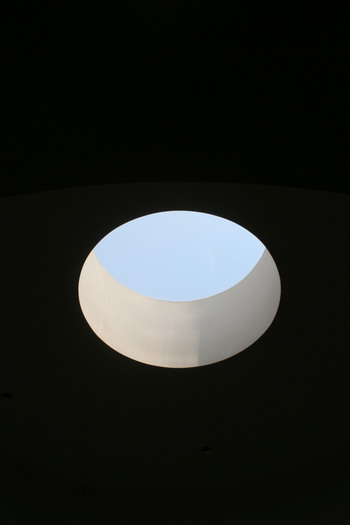Los Angeles is home to a surprisingly large number of newcomers to the bird world – wild parrots ( parrots and parakeets, to be more precise). According to some ornithologists nearly 5,000 of these birds live in the urban landscape. As parrots do not occur naturally in California, this population arose from birds who either escaped captivity or were thrown out by their owners.
Interestingly enough these parrots are confirmed city dwellers. The reason why they have not (yet) moved out into less populated landscapes is quite simple: Parrots are not native birds, they are used to fruits, trees and shrubs of their native tropical home, which have been planted in large numbers in our urban and residential areas. So they stay where the food is, which is definitely not out there in the countryside.
One tree these birds particularly like is the Floss Silk Tree (Chorisia speciosa):
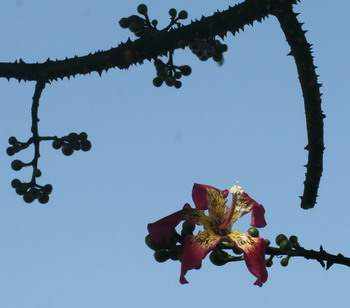
This tree itself, a native of the tropical forests of South America, is quite a newcomer to the city; it has been planted only since about 30 to 40 years. The flowers are very beautiful, the trunk and branches look a bit forbidding once they reach maturity, because they are covered with thick conical prickles, used to store water. The fruit looks like huge avocados or gigantic pears and the parrots just love them.
A fruit-bearing Floss Silk tree can be detected by the noise of the parrots having a meal, digging into the pods and gobbling up the seeds, while telling each other in between bites in loud parrot screeches: “It’s just like back home, isn’t it?!”



